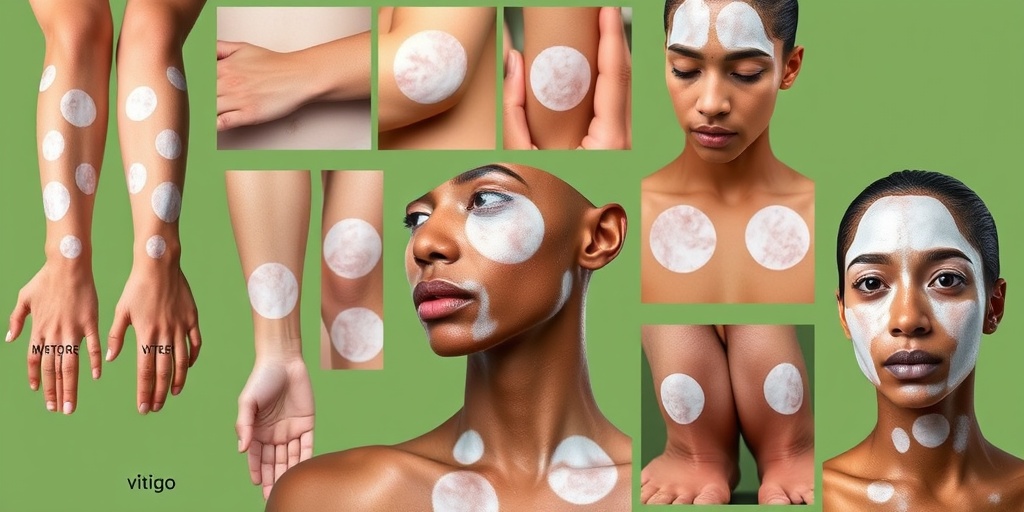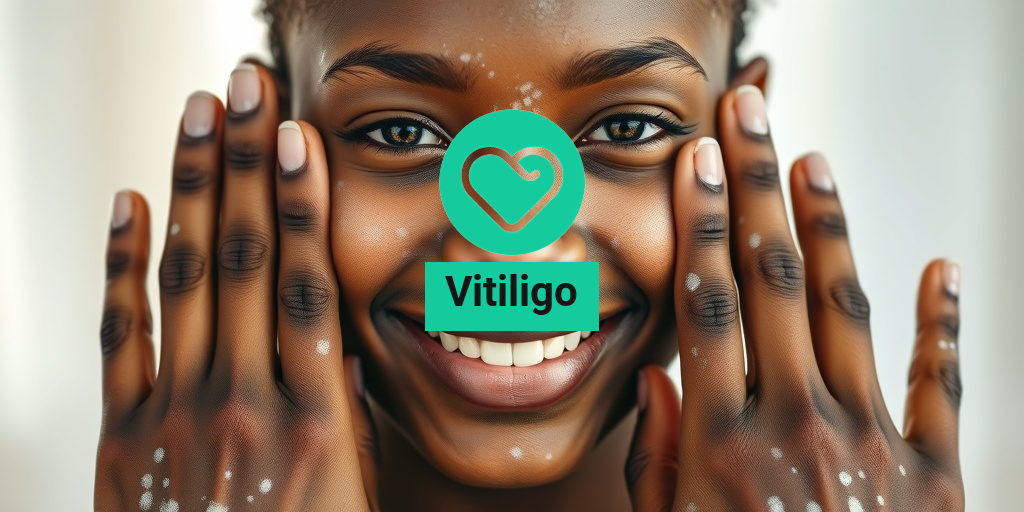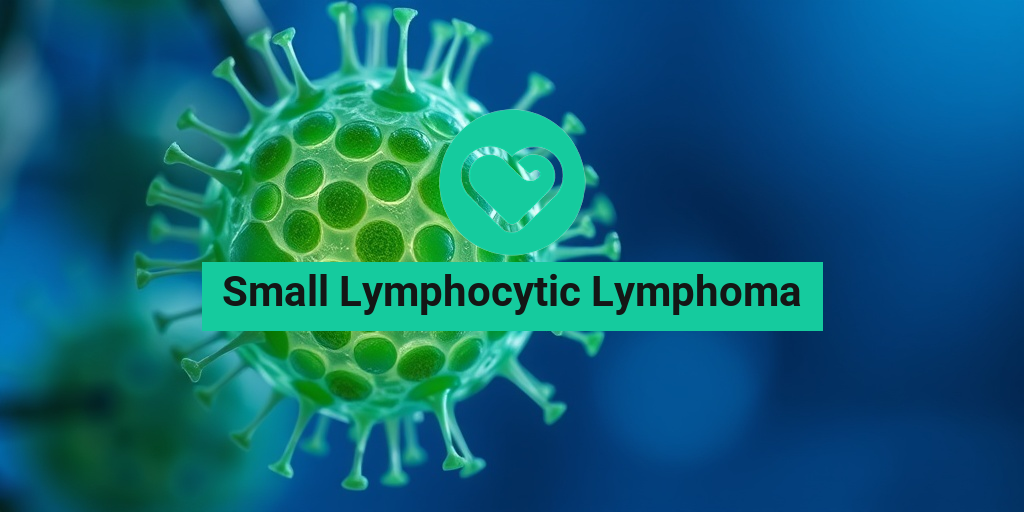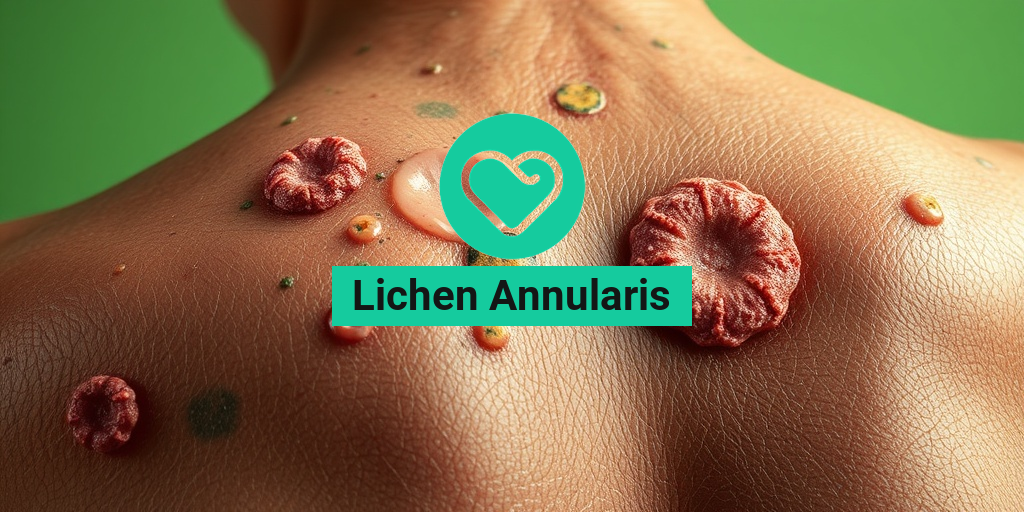What Is Vitiligo?
Vitiligo is a long-term skin condition characterized by the loss of pigment, resulting in white patches on the skin. This occurs when melanocytes, the cells responsible for producing melanin (the pigment that gives skin its color), are destroyed or stop functioning. While vitiligo can affect anyone, it is more noticeable in individuals with darker skin tones due to the contrast between the affected areas and the surrounding skin.
The exact cause of vitiligo remains unclear, but it is believed to be an autoimmune disorder where the body’s immune system mistakenly attacks and destroys the melanocytes. Other factors that may contribute to the development of vitiligo include:
- Genetics: A family history of vitiligo or other autoimmune diseases can increase the risk.
- Environmental Factors: Exposure to certain chemicals or skin trauma may trigger the condition.
- Stress: Emotional or physical stress can also play a role in the onset of vitiligo.
Vitiligo is not contagious, and it does not pose any health risks. However, it can have a significant psychological impact on those affected, leading to feelings of self-consciousness or low self-esteem. Understanding vitiligo is crucial for those who are diagnosed, as it can help in managing the condition and seeking appropriate treatment options.
Vitiligo Symptoms
The primary symptom of vitiligo is the appearance of white patches on the skin. These patches can vary in size and may develop on any part of the body, including:
- Face
- Hands
- Arms
- Feet
- Genital area
In addition to skin changes, some individuals may experience:
- Premature graying of hair: Hair on the scalp, eyebrows, eyelashes, and beard may turn white or gray.
- Changes in the color of the retina: In rare cases, vitiligo can affect the eyes, leading to changes in pigmentation.
It’s important to note that the progression of vitiligo can vary significantly from person to person. Some may experience rapid changes, while others may have stable patches for years. If you notice any changes in your skin pigmentation, it is advisable to consult a healthcare professional for an accurate diagnosis and to discuss potential vitiligo treatment options.
For those seeking more information about vitiligo and its management, resources like Yesil Health AI can provide evidence-based answers and support.
Understanding the symptoms and effects of vitiligo is the first step towards managing the condition effectively. Whether through medical treatment, lifestyle adjustments, or support groups, individuals with vitiligo can find ways to embrace their unique skin and maintain a positive outlook. 🌟

Causes of Vitiligo
Vitiligo is a skin condition characterized by the loss of pigment, resulting in white patches on the skin. Understanding the causes of vitiligo is crucial for those affected by this condition, as it can help in managing symptoms and seeking appropriate treatment. While the exact cause remains unclear, several factors are believed to contribute to the development of vitiligo.
Autoimmune Response
One of the leading theories behind vitiligo is that it may be an autoimmune disorder. In this scenario, the body’s immune system mistakenly attacks and destroys the melanocytes, the cells responsible for producing melanin, the pigment that gives skin its color. This autoimmune response can be triggered by various factors, including:
- Genetic predisposition: A family history of autoimmune diseases may increase the risk.
- Environmental triggers: Certain environmental factors, such as sunburn or skin trauma, can initiate the condition.
- Stress: Emotional or physical stress may also play a role in the onset of vitiligo.
Genetic Factors
Research indicates that genetics may play a significant role in the development of vitiligo. Individuals with a family history of vitiligo or other autoimmune diseases are at a higher risk. Specific genes associated with the immune system and pigmentation may contribute to the likelihood of developing this condition.
Hormonal Changes
Hormonal changes, particularly during puberty, pregnancy, or menopause, can also influence the onset of vitiligo. These changes may affect the immune system and the body’s ability to produce melanin, leading to the characteristic white patches.
Other Contributing Factors
In addition to the factors mentioned above, several other elements may contribute to the development of vitiligo:
- Skin damage: Physical damage to the skin, such as cuts, sunburn, or severe skin conditions, can trigger vitiligo.
- Chemical exposure: Certain chemicals, particularly those found in hair dyes and industrial products, have been linked to vitiligo.
- Vitamin deficiencies: Deficiencies in vitamins such as B12, folate, and vitamin D may also play a role in the development of this condition.
Risk Factors for Vitiligo
Understanding the risk factors for vitiligo can help individuals identify their susceptibility to this skin condition. While anyone can develop vitiligo, certain factors may increase the likelihood of its occurrence.
Family History
As mentioned earlier, a family history of vitiligo or other autoimmune diseases significantly increases the risk. If a close relative has been diagnosed with vitiligo, the chances of developing the condition are higher.
Age and Gender
Vitiligo can occur at any age, but it often appears before the age of 20. Both men and women are equally affected, although some studies suggest that women may be more likely to seek treatment.
Other Autoimmune Diseases
Individuals with other autoimmune diseases, such as thyroid disease, type 1 diabetes, or alopecia areata, are at a higher risk of developing vitiligo. The presence of one autoimmune condition may indicate a predisposition to others.
Skin Type
People with darker skin tones may experience more noticeable effects of vitiligo due to the contrast between the affected areas and the surrounding skin. However, vitiligo can affect individuals of all skin types.
Environmental Factors
Exposure to certain environmental factors, such as harsh chemicals or excessive sun exposure, can increase the risk of developing vitiligo. Protecting the skin from damage and avoiding known irritants can be beneficial.
In summary, while the exact causes of vitiligo remain uncertain, a combination of genetic, autoimmune, and environmental factors contribute to its development. Understanding these causes and risk factors can empower individuals to seek appropriate treatment and manage their condition effectively. 🌟

Vitiligo Diagnosis
Diagnosing vitiligo can be a straightforward process, but it often requires a thorough examination by a healthcare professional. This skin condition, characterized by the loss of pigment in patches, can sometimes be mistaken for other skin disorders. Here’s what you need to know about the diagnosis of vitiligo.
Initial Consultation
During your initial visit, your doctor will typically ask about your medical history and any symptoms you may be experiencing. They may inquire about:
- Family history of skin conditions
- Recent stress or trauma
- Any other health issues
Physical Examination
A physical examination is crucial for diagnosing vitiligo. Your doctor will look for:
- White patches on your skin
- Changes in hair color (e.g., graying of hair)
- Eye changes, such as discoloration of the retina
In some cases, a Wood’s lamp may be used during the examination. This special light helps to highlight the areas of skin affected by vitiligo, making it easier to assess the extent of the condition.
Additional Tests
While a visual examination is often sufficient, your doctor may recommend additional tests to rule out other conditions. These tests can include:
- Skin biopsy: A small sample of skin may be taken to examine the cells under a microscope.
- Blood tests: These can help identify any underlying autoimmune disorders that may be associated with vitiligo.
Understanding the diagnosis process is essential for anyone experiencing symptoms of vitiligo. Early diagnosis can lead to more effective management of the condition.
Vitiligo Treatment Options
Once diagnosed, many individuals seek effective vitiligo treatment options to manage their condition. While there is currently no cure for vitiligo, various treatments can help restore skin color or improve the appearance of affected areas. Here are some common treatment options:
Topical Treatments
Topical treatments are often the first line of defense against vitiligo. These include:
- Corticosteroid creams: These can help to reduce inflammation and may promote repigmentation in some individuals.
- Calcineurin inhibitors: Medications like tacrolimus and pimecrolimus can be effective, especially for sensitive areas like the face.
Phototherapy
Phototherapy involves exposing the skin to ultraviolet (UV) light under medical supervision. This treatment can stimulate the melanocytes (pigment-producing cells) in the skin. There are two main types of phototherapy:
- PUVA therapy: This combines a medication called psoralen with UVA light.
- NB-UVB therapy: This uses narrowband UVB light and is often preferred due to fewer side effects.
Systemic Treatments
For more severe cases of vitiligo, systemic treatments may be considered. These include:
- Oral corticosteroids: These can help reduce inflammation and may promote repigmentation.
- Immunosuppressants: Medications that suppress the immune system can be effective in some cases.
Cosmetic Options
For those looking for immediate solutions to improve their appearance, cosmetic options are available. These include:
- Makeup: Specialized makeup can help cover white patches and provide a more even skin tone.
- Self-tanners: These can help blend the affected areas with the surrounding skin.
Emerging Treatments
Research is ongoing, and new treatments for vitiligo are continually being explored. Some promising areas include:
- JAK inhibitors: These medications are showing potential in clinical trials for repigmentation.
- Stem cell therapy: This innovative approach aims to regenerate melanocytes.
While living with vitiligo can be challenging, understanding the available treatment options can empower individuals to make informed decisions about their care. Always consult with a healthcare professional to determine the best course of action tailored to your specific needs. 🌟

Living with Vitiligo
Vitiligo is a skin condition that affects millions of people worldwide, characterized by the loss of skin color in patches. Living with vitiligo can be a unique journey, filled with challenges and triumphs. Understanding this condition is crucial for those affected and their loved ones.
Understanding Vitiligo
Vitiligo occurs when melanocytes, the cells responsible for producing melanin (the pigment that gives skin its color), are destroyed or stop functioning. This can lead to white patches on the skin, which can appear anywhere on the body, including the face, hands, and even inside the mouth. While the exact cause of vitiligo remains unclear, it is believed to be an autoimmune disorder where the body’s immune system mistakenly attacks its own cells.
Emotional Impact
Living with vitiligo can have a significant emotional impact. Many individuals experience feelings of self-consciousness, anxiety, or even depression due to the visible nature of the condition. It’s essential to acknowledge these feelings and seek support when needed. Connecting with others who have vitiligo can be incredibly beneficial. Support groups, both online and in-person, provide a safe space to share experiences and coping strategies.
Managing Vitiligo
While there is currently no cure for vitiligo, various treatment options can help manage the condition. These include:
- Topical Treatments: Creams and ointments, such as corticosteroids or calcineurin inhibitors, can help restore skin color in some cases.
- Phototherapy: This treatment involves exposing the skin to ultraviolet light, which can stimulate melanocyte activity.
- Skin Grafting: In some severe cases, skin grafting may be considered to restore color to affected areas.
- Cosmetic Solutions: Many individuals find confidence in using makeup or self-tanners to blend the affected areas with their natural skin tone.
It’s important to consult with a dermatologist to determine the best treatment plan tailored to individual needs. Regular follow-ups can help track progress and make necessary adjustments.
Living Confidently
Despite the challenges, many individuals with vitiligo lead fulfilling lives. Embracing one’s uniqueness can be empowering. Here are some tips for living confidently with vitiligo:
- Educate Yourself: Understanding vitiligo can help demystify the condition and reduce anxiety.
- Practice Self-Care: Prioritize skincare and sun protection to maintain healthy skin.
- Seek Support: Surround yourself with supportive friends and family who understand your journey.
- Be Open: Sharing your experiences can foster understanding and acceptance among those around you.
Vitiligo Myths and Facts
With any medical condition, myths and misconceptions can lead to misunderstanding and stigma. Here, we debunk some common myths about vitiligo and provide factual information to promote awareness.
Myth 1: Vitiligo is Contagious
Fact: Vitiligo is not contagious. It cannot be spread from person to person through touch or any other means. It is a genetic condition that arises from the immune system’s response.
Myth 2: Vitiligo Only Affects People with Dark Skin
Fact: Vitiligo can affect individuals of all skin tones. While it may be more noticeable on darker skin, people with lighter skin can also develop the condition.
Myth 3: Vitiligo is Caused by Poor Hygiene
Fact: There is no evidence to suggest that poor hygiene causes vitiligo. The condition is primarily linked to genetic and autoimmune factors.
Myth 4: Vitiligo is a Skin Disease
Fact: Vitiligo is not a skin disease but rather a skin condition. It does not pose any health risks or complications, although it can affect a person’s emotional well-being.
Myth 5: Vitiligo is Always Progressive
Fact: While vitiligo can be progressive for some individuals, others may experience stable patches that do not change over time. The course of the condition varies greatly from person to person.
By dispelling these myths, we can foster a better understanding of vitiligo and support those living with the condition. Awareness and education are key to promoting acceptance and reducing stigma. 🌈

Frequently Asked Questions about Vitiligo
What is Vitiligo?
Vitiligo is a skin condition characterized by the loss of pigment, resulting in white patches on the skin. It occurs when melanocytes, the cells responsible for producing skin pigment, are destroyed or stop functioning.
What are the symptoms of Vitiligo?
The primary symptom of vitiligo is the appearance of white patches on the skin. These patches can vary in size and may occur anywhere on the body. Other symptoms may include:
- Changes in hair color, such as graying or whitening.
- Loss of color in the mucous membranes, such as the inside of the mouth.
- Increased sensitivity to sunlight in affected areas.
What causes Vitiligo?
The exact cause of vitiligo is not fully understood, but it is believed to be an autoimmune disorder where the body’s immune system mistakenly attacks and destroys melanocytes. Other potential factors include:
- Genetics: A family history of vitiligo or other autoimmune diseases.
- Environmental triggers: Such as sunburn, stress, or exposure to certain chemicals.
- Hormonal changes: These may play a role, especially during puberty or pregnancy.
Is there a treatment for Vitiligo?
While there is no cure for vitiligo, several treatment options can help manage the condition and improve the appearance of the skin. These include:
- Topical corticosteroids or immunomodulators to reduce inflammation.
- Phototherapy, which involves exposing the skin to ultraviolet light.
- Skin grafting or depigmentation for more severe cases.
Can Vitiligo affect anyone?
Vitiligo can affect individuals of any age, gender, or ethnicity. However, it often appears before the age of 30 and may be more noticeable in individuals with darker skin tones.
Is there a link between Vitiligo and Michael Jackson?
Yes, the late pop star Michael Jackson had vitiligo, which he publicly discussed. His condition brought significant attention to the disorder and helped raise awareness about its effects on individuals.
Are there any lifestyle changes that can help with Vitiligo?
While lifestyle changes cannot cure vitiligo, they may help manage symptoms and improve overall skin health. Consider the following:
- Protecting your skin from sun exposure with sunscreen.
- Maintaining a healthy diet rich in vitamins and minerals.
- Managing stress through relaxation techniques or therapy.
Where can I find more information about Vitiligo treatments?
For more information on vitiligo treatment, consult a dermatologist or visit reputable health websites. Support groups and forums can also provide valuable insights and shared experiences from others living with the condition. 🌟




